A Novel Tire and Road Testing Bench for Modern Automotive Needs
Abstract
1. Introduction
- the monorail track; currently there are no closed-loop monorails that study both the pavement and the tire and allow the laying of any type of pavement with varying degrees of irregularities using conventional machines.
- The monorail has a v-shape that efficiently transfers both vertical and horizontal forces to the ground.
- The cart and its cantilever arm can support wheels from both lightweight vehicles and heavy-duty vehicles and can also support the entire vehicle’s subsystems.
2. State-of-Art in Tyre and Road Testing
2.1. Pavement Testing
2.2. Tire Testing
3. Description of the Novel Test-Bench
3.1. Track/Platform
- The measurement straights, highlighted in yellow in Figure 6, serve as the phase for actual measurements at a constant travel speed of up to 60 .
- The deceleration curve is composed of a variable radius clothoid, connecting the straight segment to the section with the minimum constant radius. The utilization of the clothoid aims to seamlessly transition between the straight and minimum radius curve, providing an optimized compromise between centrifugal force and travel speed.
- The constant radius part where constant velocity is imposed has a threshold that is computed to obtain acceptable centrifugal loads.
- The acceleration curve segment comprises a clothoid linking the constant radius curvature segment to the second straight. The longer length of the acceleration segment, compared to the deceleration segment, is justified by the driving power being lower than the braking power.
3.2. The Cart
3.3. Sensors and Head of Measurements
- Two laser Doppler sensors, installed on the wheel support and having an angle of 90° between them, pointed at the pavement for measuring the direction and the value of the speed of the head of the measurement with respect to the pavement.
- Three laser sensors, installed on the wheel support, point at the pavement for the reconstruction of the plane of the pavement and consequently the orientation of the tire to be studied. The system of laser sensors can be integrated with more sensors, at least five sensors, mounted on a beam to record pavement deflections at different distances, generally on the rear of the wheel at 300, 450, 600, 900 and 1200 . These deflections can be used for the dynamic identification of the pavement structure and to evaluate structural damage under heavy loads.
- An LVDT (Linear Variable Differential Transformer) sensor, installed parallelly to the tie rod, allows the evaluation of the steering angle of the wheel (and consequently the tire slip angle).
- A rotational Hall sensor for evaluating the angular velocity of the wheel to be measured.
- A series of strain gauges, as illustrated in [19], allow the evaluation of the forces between the tire and the pavement based on the suspension rods’ deformation.
4. The Multibody Model
5. Conclusions
- The structure features a closed-loop track with an equipped and instrumented cart moving along a single rail made of reinforced concrete, facilitating the evaluation of road surface and tire wear, and force-slippage characteristics under realistic conditions. The system is also able to measure tire-road rolling noise and monitor strains in pavement layers and surface deflections to evaluate pavement response and structural damage.
- The novel test bench stands out for its capability to replicate real pavement conditions, accommodating diverse scenarios with different bituminous mixtures, unevenness, and climatic conditions, particularly water film thickness.
- This design addresses the limitations of existing tire testing machines, which often fail to accurately reproduce interactions with in-service pavements, thereby bridging the gap between laboratory experiments and real-world driving.
- The closed-track structure, together with the electric power supply, allows tire testing to be more ecological by significantly reducing carbon emissions compared to conventional mobile test systems. Moreover, the incorporation of an energy recovery system during tire slip tests enables further reduction in power consumption, enhancing the sustainability of the testing process. However, it is important to note that the heavier structure of the test bench may lead to higher power absorption during tests, potentially increasing operational costs.
- Despite the high initial investment required for building the structure, which may still exceed the costs of indoor test benches, even with measures to mitigate construction expenses, the operational costs and energy consumption are projected to be comparable with traditional lab testing machines. Moreover, the inclusion of in-service pavement testing provides an additional advantage, further justifying the initial investment.
- The detailed engineering approach minimizes centrifugal forces and ensures secure contact between the measuring apparatus and the pavement.
- Simulation results validate the design, showing significant reductions in peak power during constant and maximum test speed movements and supporting stability for obtaining accurate tire characteristic curves.
Author Contributions
Funding
Data Availability Statement
Conflicts of Interest
References
- Holmberg, K.; Andersson, P.; Nylund, N.O.; Mäkelä, K.; Erdemir, A. Global energy consumption due to friction in trucks and buses. Tribol. Int. 2014, 78, 94–114. [Google Scholar] [CrossRef]
- Iversen, L.M.; Marbjerg, G.H.; Bendtsen, H. Noise from Electric Vehicles–‘State-of-the-Art’ Literature Survey. 2013. Available online: https://api.semanticscholar.org/CorpusID:218654178 (accessed on 8 May 2024).
- Forte, A. Review of the last draft requirements of the Euro 7 emissions standard and their impact on light-duty car manufacturers. In Proceedings of the 2023 IEEE International Workshop on Metrology for Automotive (MetroAutomotive), Modena, Italy, 28–30 June 2023; IEEE: Piscataway, NJ, USA, 2023; pp. 7–12. [Google Scholar]
- Langer, W.J. Flat Belt Tire Tester. U.S. Patent 4 238 954 A, 23 February 1979. [Google Scholar]
- Oblizajek, K.L.; Lauer, C.; Culp, E.H. Tire Testing Apparatus. U.S. Patent 4 593 557 A, 26 February 1985. [Google Scholar]
- Nguyen, M.L.; Chazallon, C.; Sahli, M.; Koval, G.; Hornych, P.; Doligez, D.; Chabot, A.; Le Gal, Y.; Brissaud, L.; Godard, E. Design of reinforced pavements with glass fiber grids: From laboratory evaluation of the fatigue life to accelerated full-scale test. In Accelerated Pavement Testing to Transport Infrastructure Innovation: Proceedings of 6th APT Conference; Springer: Berlin/Heidelberg, Germany, 2020; pp. 329–338. [Google Scholar]
- Zhang, W.; Macdonald, R.A. The Danish Road Testing Machine 1995–2000. In Proceedings of the International Conference on Accelerated Pavement Testing, Reno, NV, USA, 18–20 October 1999. [Google Scholar]
- Romanoschi, S.; Scullion, T. Validation of the Maximum Allowable Amounts of Recycled Binder, RAP, and RAS Using Accelerated Pavement Testing-Interim Report; Technical Report; Texas Department of Transportation, Research and Technology Implementation Office: Houston, TX, USA, 2014.
- Fosu-Saah, B.; Hafez, M.; Ksaibati, K. A Review of Accelerated Pavement Testing Applications in Non-Pavement Research. CivilEng 2021, 2, 612–631. [Google Scholar] [CrossRef]
- Cuttino, J.F. Tire Testing Systems and Methods. U.S. Patent 8 474 311 B2, 2 July 2013. [Google Scholar]
- Cuttino, J.F. Tire Testing Systems and Methods. U.S. Patent 8 806 931 B2, 19 August 2014. [Google Scholar]
- Matsumoto, S.; Miyashita, H.; Murauchi, K.; Hasegawa, M.; Sakagami, T. Tire Testing Device. Patent JP 2022 009 437 A, 4 August 2022. [Google Scholar]
- Bucchi, F.; Frendo, F.; Bavaresco, F.; Conte, G. Multibody simulation of a rope-driven automated people mover. Proc. Inst. Mech. Eng. Part F J. Rail Rapid Transit 2018, 232, 2173–2185. [Google Scholar] [CrossRef]
- Bucchi, F.; Losa, M.; Frendo, F.; Favilli, F.; Leandri, P. Apparecchiatura e Impianto per Testare Sottosistemi Comprendenti Ruote di Veicoli e Pavimentazioni per Infrastrutture di Trasporto su Gomma. Patent B10/1747 no. 102023000028446, 29 December 2023. [Google Scholar]
- Santero, N.; Loijos, A.; Ochsendorf, J. Greenhouse gas emissions reduction opportunities for concrete pavements. J. Ind. Ecol. 2013, 17, 859–868. [Google Scholar] [CrossRef]
- ika—RWTH Aachen University. Mobile Tyre Test Rig “FaReP”. Available online: https://www.ika.rwth-aachen.de/en/competences/equipment/test-benches/farep-en.html (accessed on 10 April 2024).
- FKA. Cornering and Traction Test Rig MTS Flat-Trac IV CT Plus. Available online: https://www.fka.de/en/testing/chassis/112-cornering-traction-test-rig-mts-flat-trac-iv-ct-plus.html (accessed on 10 April 2024).
- Kistler Group. Measuring and Test Systems for the Tire Industry—Take Full Advantage of Top Performance. Available online: https://www.kistler.com/US/en/tire-327testing/C00000072 (accessed on 10 April 2024).
- Batistini, L.; Donati, S.; Nori, M.; Tirabassi, L.; Bucchi, F.; Frendo, F. Suspension and tyre loads estimation of an FSAE car: Model development and on-track validation. Veh. Syst. Dyn. 2024, 1–22. [Google Scholar] [CrossRef]
- Losa, M.; Leandri, P.; Licitra, G. Mixture design optimization of low-noise pavements. Transp. Res. Rec. 2013, 2372, 25–33. [Google Scholar] [CrossRef]
- Li, T. A state-of-the-art review of measurement techniques on tire–pavement interaction noise. Measurement 2018, 128, 325–351. [Google Scholar] [CrossRef]
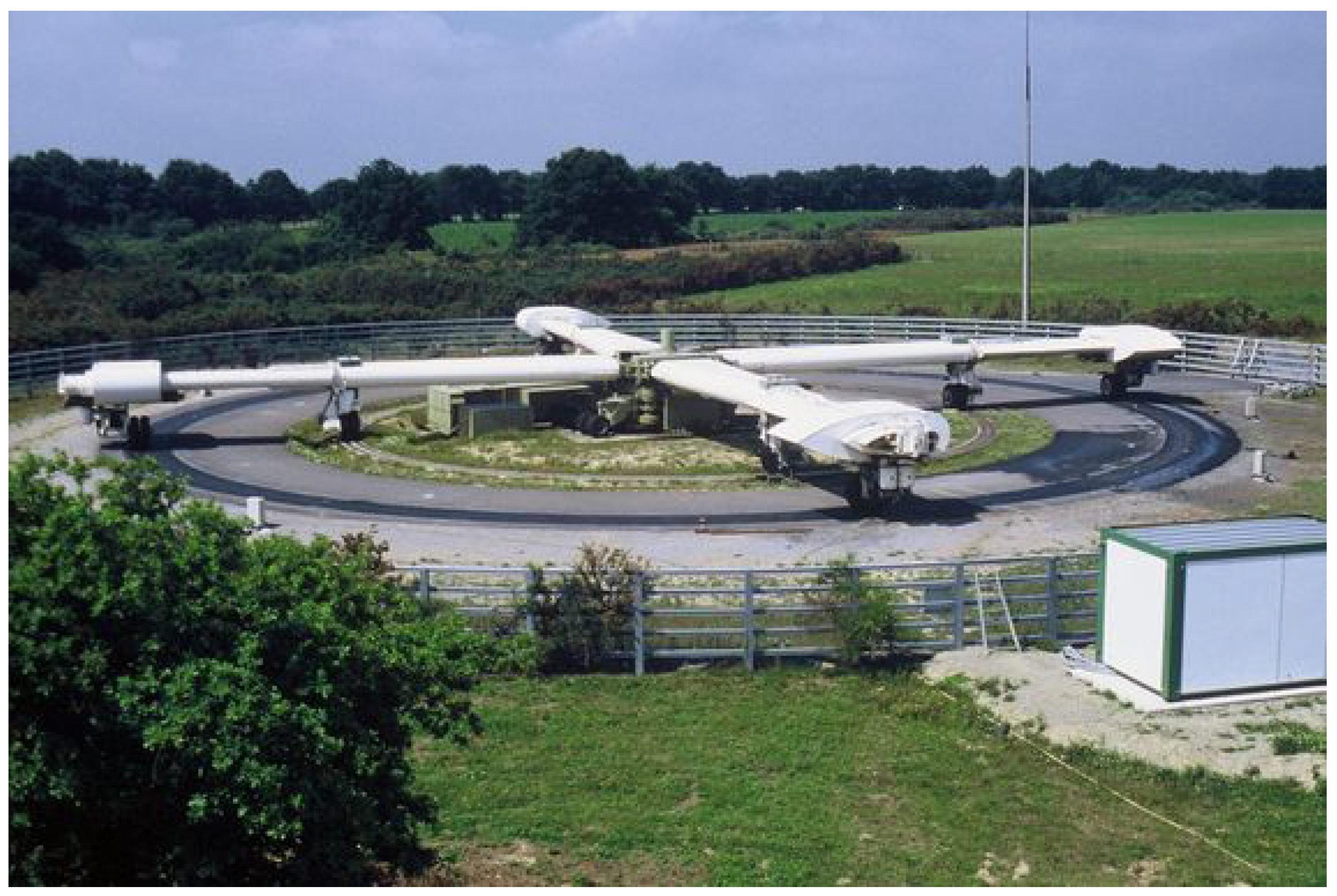
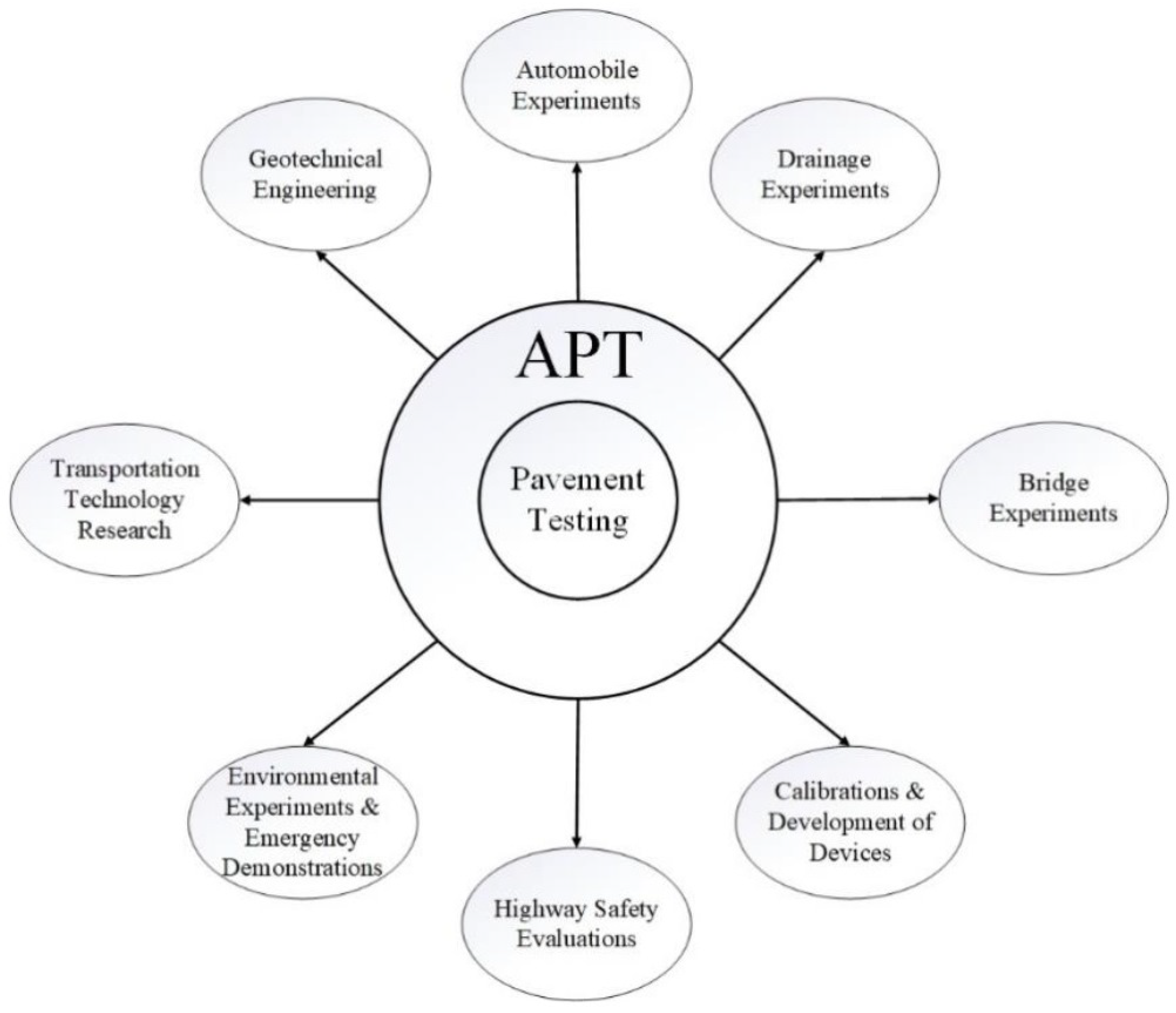


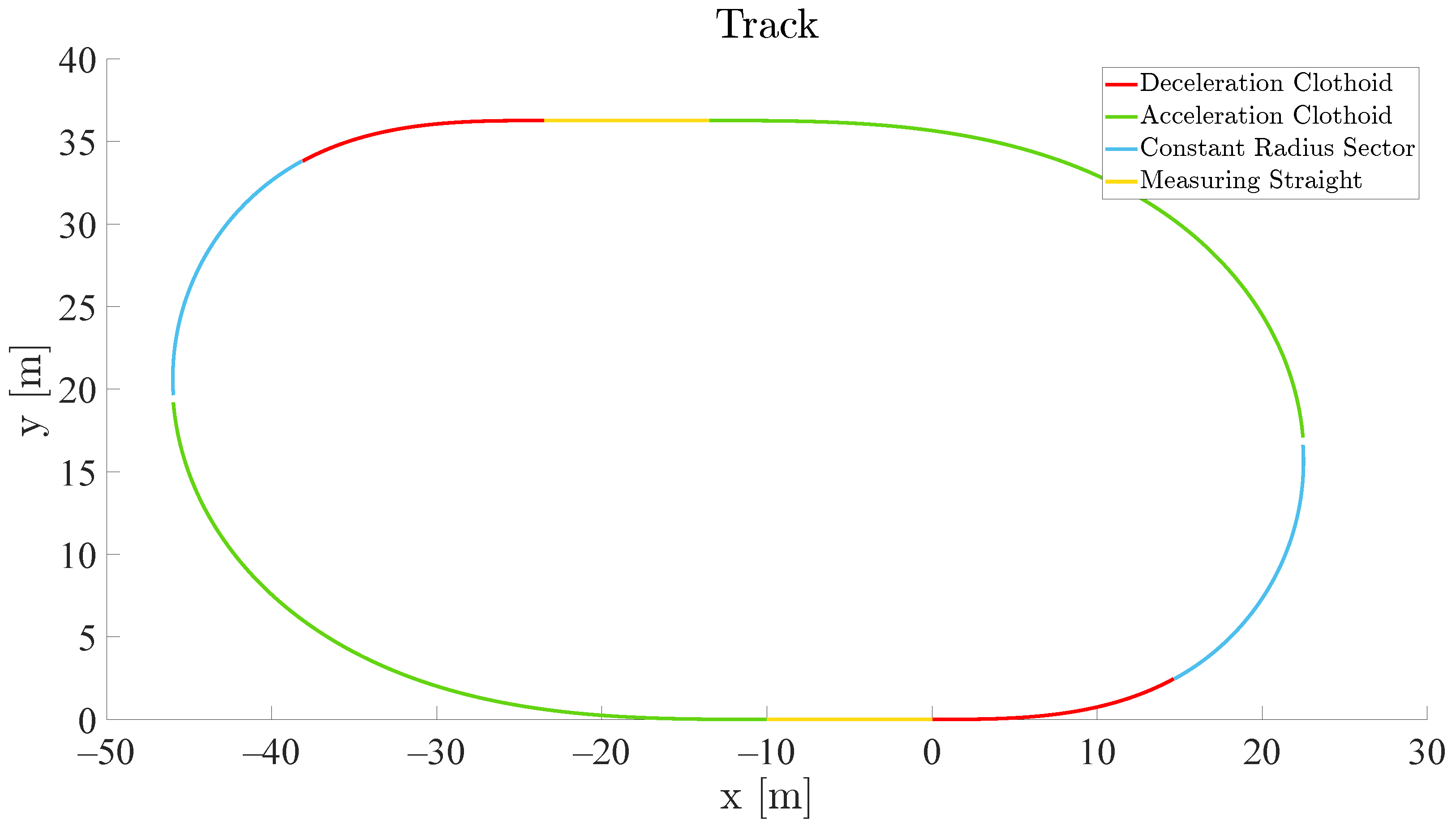
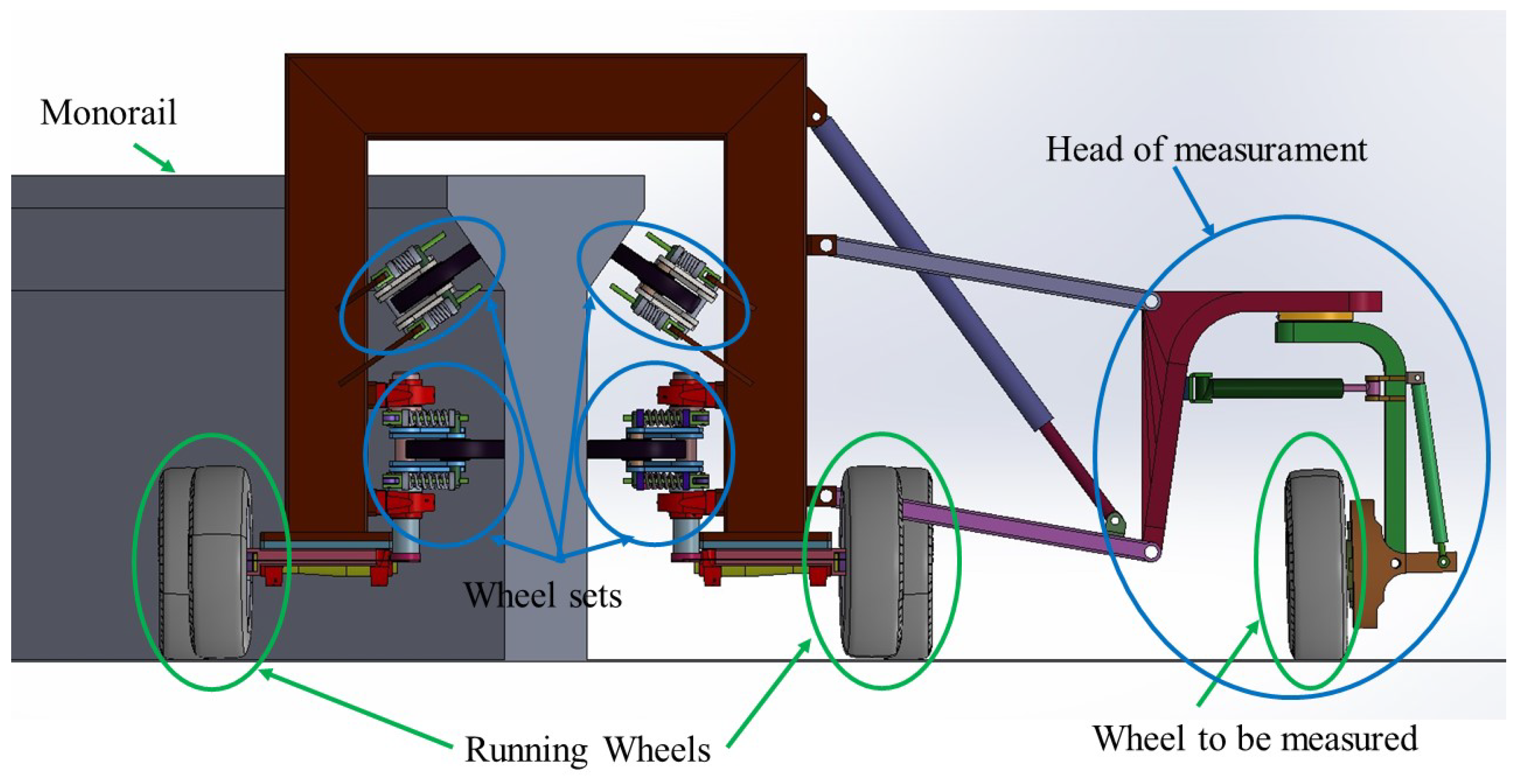
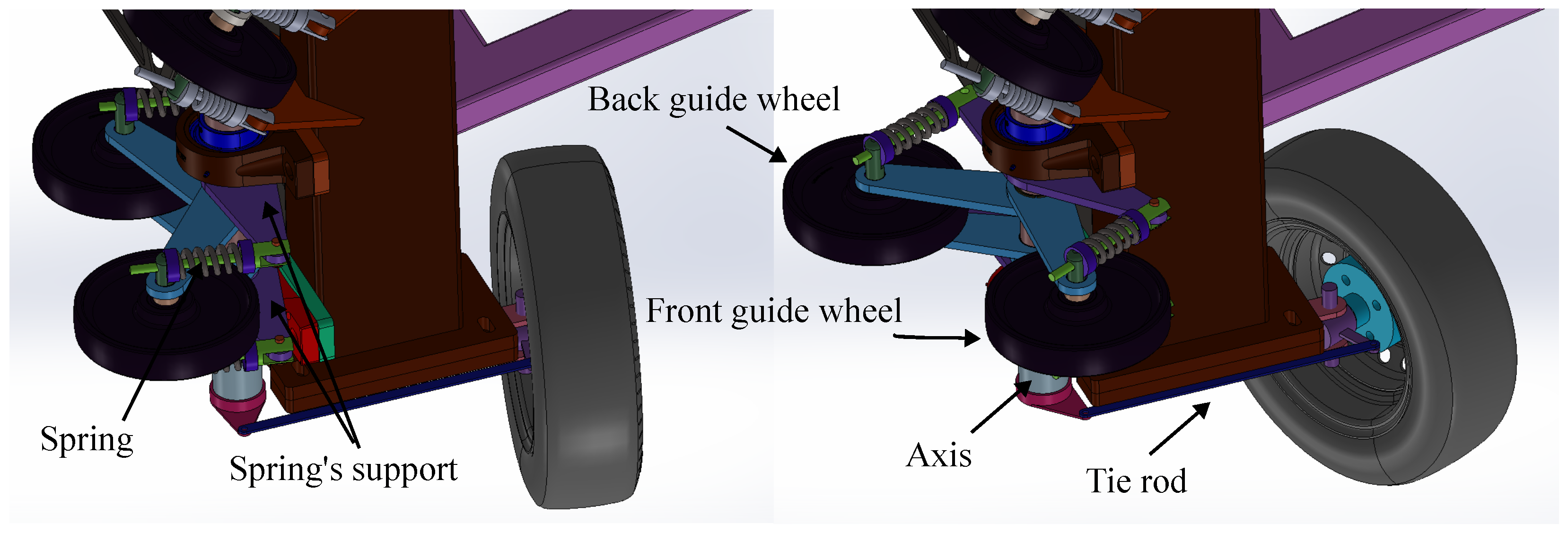
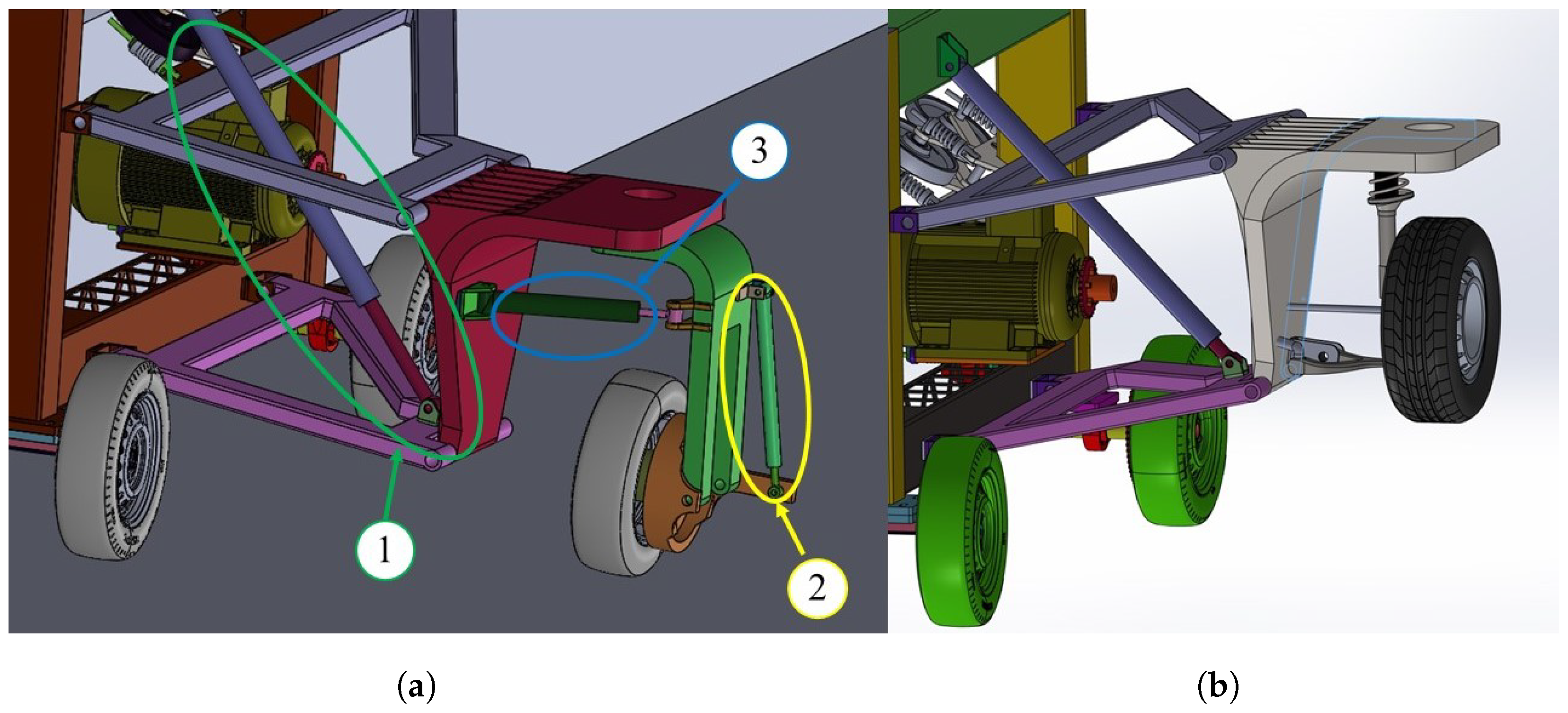




| Current Test Benches | New Design |
|---|---|
| Only-tire or only-pavement testing | Contemporary tire and pavement testing |
| [6,7,8,16,17,18] | |
| Vehicle’s subsystem testing not allowed | Vehicle’s subsystem testing allowed |
| [6,7,8,16,17,18] | |
| Not real pavement [17,18] | Real pavement |
| Only one kind of surface [7,17,18] | Various surfaces and/or irregularities |
| Single weather condition [17,18] | Different weather conditions |
| Force | Force | Force | Tire-Road | Rolling | |
|---|---|---|---|---|---|
| vs. | vs. | vs. | Noise | Resistance | |
| Slip Angle | Camber | Long. Slip | |||
| 2 Doppler sensors 90° | ✓ | ||||
| 3 Laser displacement sensors | ✓ | ✓ | |||
| Tie Rod LVDT | ✓ | ✓ | ✓ | ✓ | |
| Rotational Hall sensor | ✓ | ✓ | ✓ | ||
| Strain gauges | ✓ | ✓ | ✓ | ✓ | ✓ |
| Microphones | ✓ |
Disclaimer/Publisher’s Note: The statements, opinions and data contained in all publications are solely those of the individual author(s) and contributor(s) and not of MDPI and/or the editor(s). MDPI and/or the editor(s) disclaim responsibility for any injury to people or property resulting from any ideas, methods, instructions or products referred to in the content. |
© 2024 by the authors. Licensee MDPI, Basel, Switzerland. This article is an open access article distributed under the terms and conditions of the Creative Commons Attribution (CC BY) license (https://creativecommons.org/licenses/by/4.0/).
Share and Cite
Favilli, F.; Sgamma, M.; Bucchi, F.; Frendo, F.; Leandri, P.; Losa, M. A Novel Tire and Road Testing Bench for Modern Automotive Needs. Designs 2024, 8, 64. https://doi.org/10.3390/designs8040064
Favilli F, Sgamma M, Bucchi F, Frendo F, Leandri P, Losa M. A Novel Tire and Road Testing Bench for Modern Automotive Needs. Designs. 2024; 8(4):64. https://doi.org/10.3390/designs8040064
Chicago/Turabian StyleFavilli, Francesco, Michele Sgamma, Francesco Bucchi, Francesco Frendo, Pietro Leandri, and Massimo Losa. 2024. "A Novel Tire and Road Testing Bench for Modern Automotive Needs" Designs 8, no. 4: 64. https://doi.org/10.3390/designs8040064
APA StyleFavilli, F., Sgamma, M., Bucchi, F., Frendo, F., Leandri, P., & Losa, M. (2024). A Novel Tire and Road Testing Bench for Modern Automotive Needs. Designs, 8(4), 64. https://doi.org/10.3390/designs8040064









